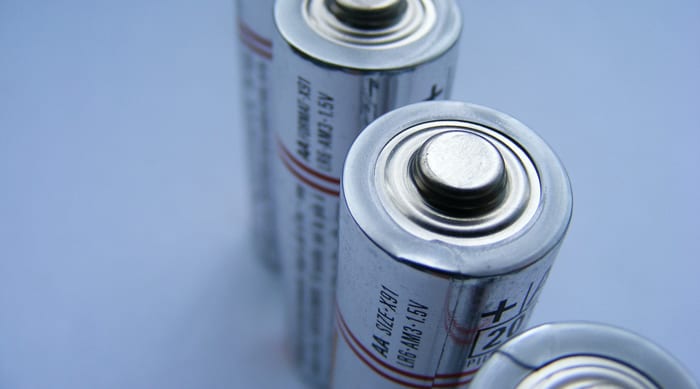Parliamentary group says 12GW of battery storage possible by 2021
A new report from the All-Party Parliamentary Group (APPG) on energy storage estimates that by the end of 2021, 12GW of battery storage deployment is possible.
5th January 2018 by Networks

The report, which was released at a recent Winter Parliamentary Reception in the House of Commons, analyses policy change in the UK. The Renewable Energy Association (REA), the report’s authors, estimates that in 2016 only 0.06 GW of battery storage was installed and operational in the UK.
12GW of battery storage, it is argued, would have a positive impact on UK energy security, would support the creation of domestic battery manufacturing and would support the export of cutting-edge low-carbon products and services post-Brexit.
Given the current pace and nature of policy change, however, the group estimates that the “medium deployment” scenario, of 8GW of battery storage is more likely. The “low deployment” scenario, if minimal regulatory change occurs and barriers are erected to slow deployment, foresees 1.7 GW.
Peter Aldous MP (Con), chair of the APPG on energy storage said: “Significant battery storage deployment is possible if the Government keeps to the targets and timelines it has already set for encouraging electricity system flexibility.
“Twelve gigawatts of battery storage would improve the UK’s energy security, would help us maximise our energy self-sufficiency, and empower consumers across the country as they are more able to manage their bills and take personal action to reduce carbon emissions. Such a significant amount of battery storage deployment would also support the Government’s ambitions to develop the UK into a battery manufacturing powerhouse, evidenced in the Faraday Challenge funding announcements last week. Battery manufacturing would create new jobs and exportable expertise post-Brexit.
“Given the actual pace of policy change at present, however, we believe that it is more likely that a “medium” scenario of around 8GW of battery storage will be in place by the end of 2021.”
Dr Nina Skorupska CBE, chief executive of the Renewable Energy Association, added: “Most people in the UK know the story of renewable energy technologies such as solar and wind, the price of which has collapsed globally due to international supply chains and Government support.
“The UK Government and many in the industry significantly underestimated how cheap and popular solar PV was to become. Analysis at the start of the decade by the energy regulator, Ofgem, expected between 2GW and 7GW of solar to be deployed in the UK by 2030, instead over 12GW was deployed by the end of 2016. The technology and deployment patterns for battery storage and solar PV are similar, and this report is intended to drive big thinking and put the UK on the front foot, rather than react after-the-fact.
“Key recent changes, such as Ofgem’s ‘embedded benefits’ decision to reduce payments to smaller, decentralised power generators in addition to any potential future levies that might be imposed on decentralised generation in homes and businesses, could reduce the pace of future deployment.”
The report looks at a range of factors, including projections for battery cost decline and proposed policy changes from the Department for Business, Energy, and Industrial Strategy, the energy regulator Ofgem, and National Grid, and lays out three scenarios for battery storage deployment by the end of 2021. The report analyses battery storage deployment onsite at established solar PV and onshore wind farms, at electric vehicle charge points, connected to the transmission system, and behind-the-meter (domestic).
Comments
Login on register to comment
Related content

Power
The future for vegetation management
Why networks should focus on data not trees to overcome the costly challenges involved in vegetation management

Power
An unprecedented opportunity for change
Why short interruptions will matter in RIIO-ED2 and how to address them.

Power
Time for less talk and more action on decarbonisation
Core "oven-ready" solutions to decarbonising heat and transport exist today and should be implemented without delay, says WPD's future power networks expert.
Related supplier content

Power
Load patterns and lockdown: how Covid-19 is impacting electricity networks
Insights into dynamics on the low voltage network as the outbreak unfolds

Downloads
Protect electrical equipment from insulation failure
Insulation faults are a major cause leading to the eventual failure of electrical equipment. Partial discharge (PD) is a very reliable indicator of developing insulation faults. Regular PD testing allows users to detect and analyze PD activity

Heat
How E.ON. is helping the City of London become a zero emissions city
Discover Citigen. Deep in the heart of our bustling capital